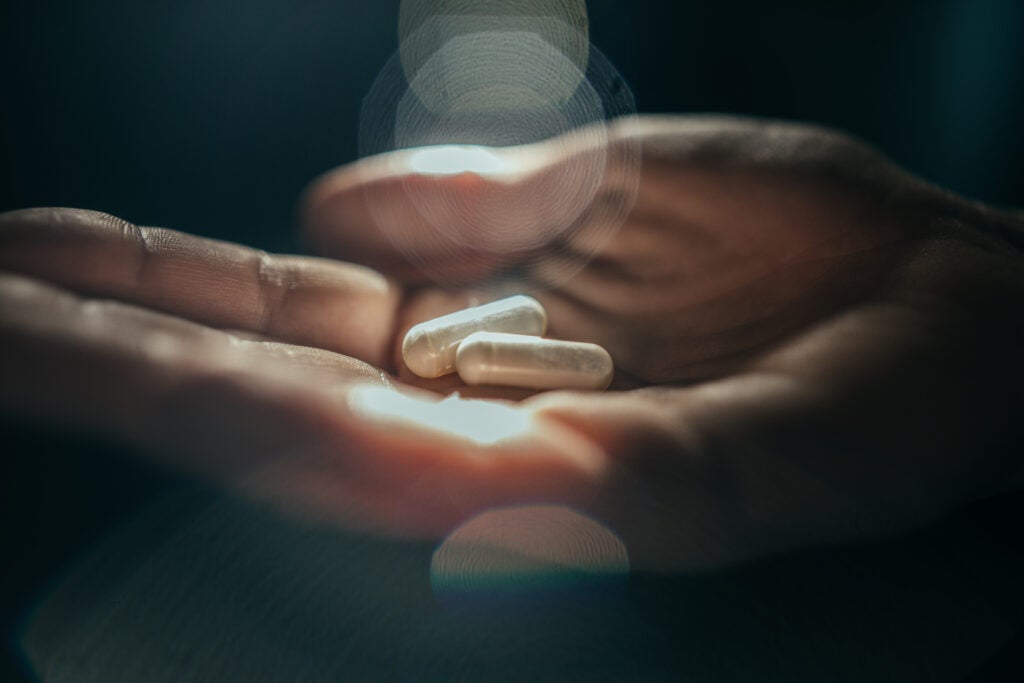
Heading out the door? Read this article on the new Outside+ app available now on iOS devices for members! <a href="https://outsideapp.onelink.me/wOhi/6wh1kbvw" class="o-content-cta-link" data-analytics-event="click" data-analytics-data="{"name":"Element Clicked","props":{"destination_url":"https://outsideapp.onelink.me/wOhi/6wh1kbvw","domain":"<>","name":"in-content-cta","type":"link"}}”>Download the app.
I used to think yoga was one-size-fits-all and that everyone would respond in the same way if “prescribed” a certain pose. Feeling low on energy? Try a dynamic Sun Salutation. Want to open your heart? Do some backbends.
After teaching thousands upon thousands of people over the past fifteen years and observing my own body (and life) change every day, I have learned that yoga is not nearly that black and white. It’s not even gray. I think of it as shades of neutral with some purple and pink hues.
Consider yoga’s health benefits. Yes, aspects of yoga have been studied and proven to create certain physiological responses. For example, Sun Salutations have repeatedly been shown to elevate the heart rate and may therefore be considered “energizing.” But not everyone responds the same way. In fact, you can change the effects of your practice simply by changing your approach. For example, practicing a sequence as a high energy, power flow can strengthen muscles and improve cardiovascular endurance. Performing a sequence more slowly can make it more meditative and calming to the nervous system.
Some of yoga’s potency–the “medicinal” quality of the practice—comes from you, the practitioner. It can depend on the intention behind the poses. Which means that, depending on how you feel on a given day, you can curate a sequence to serve exactly what you need. Like a true alchemist.
Practice With Care
Here, I’ve plotted out four different “practice prescriptions”—sequences designed to help you reset, get grounded, quell your anxiety, and boost your energy. You’ll notice that we included some of the same poses in each sequence. Observe how, by simply adjusting your intention, you can practice similar shapes and yet create totally different effects.
Though yoga isn’t (nor should it ever be) a substitute for allopathic treatment, our practice can act like a powerful vitamin, helping to fill gaps in mental, physical, and emotional health we may experience.
No matter how you practice, practice with care. Take it from yoga instructor Donna Farhi, who refers to backbends as a form of medicine in her book, Yoga Mind, Body & Spirit. Farhi writes backbends are “powerful healers, and like all strong medicine, they have the potential to be injurious if practiced without discretion.”
The Prescription Poses
These are some of the key poses in the Practice Prescriptions sequences—and each offers the opportunity for many different variations and explorations.
Balasana (Child’s Pose): Every sequence begins with a different version of Child’s Pose. The opening posture helps set the tone for the rest of the practice. It’s amazing how, by simply adjusting your arm position, you can change the energy of your entire practice.
Cat and Cow: We look at different ways to sequence and structure the classic Cat and Cow. Many classes start with this mini flow as it’s a simple way to ignite breath. Changing the position of your body allows you to target different areas and shift the focus of your energy, too.
Low Lunge: This stretch is thought of as a hip opener because of the lengthening effect it has on the front of the back thigh, but you can vary your arm position in Low Lunge to make it shoulder-focused or even add a twist.
Plank Pose: This may seem like a slightly more boring push-up, but there are myriad ways to change the familiar shape of Plank to not only make it more interesting, but to target very different areas of the body.
Virabhadrasana 2 (Warrior 2 Pose): Warrior 2 is like that sweater you’ve had for years and always wear. It’s reliable and cozy but sometimes it can get a little boring. Playing with your arms is a way that dresses it up a bit and make it more or less energizing, depending on what you need.
Ustrasana (Camel Pose): This backbend is one that most bodies can do. Camel Pose has a lot of benefits that come from the grounding of the legs and the energizing backbend. Changing the arm position can make it a totally different experience, too.
Savasana (Corpse Pose): We can’t end class without Savasana, but did you know that it doesn’t always have to be done just lying flat on your back? Exploring different configurations in this powerful pose is a wonderful way to close and contain the work you’ve done in your practice.
More Practice Rx Sequences:
About Our Contributor
Sarah Ezrin is an author, world-renowned yoga educator, popular Instagram influencer, and mama based in the San Francisco Bay Area. Her willingness to be unabashedly honest and vulnerable along with her innate wisdom make her writing, yoga classes, and social media great sources of healing and inner peace for many people. Sarah is changing the world, teaching self-love one person at a time. She is also the author of The Yoga of Parenting. You can follow her on Instagram at @sarahezrinyoga and TikTok at @sarahezrin.





